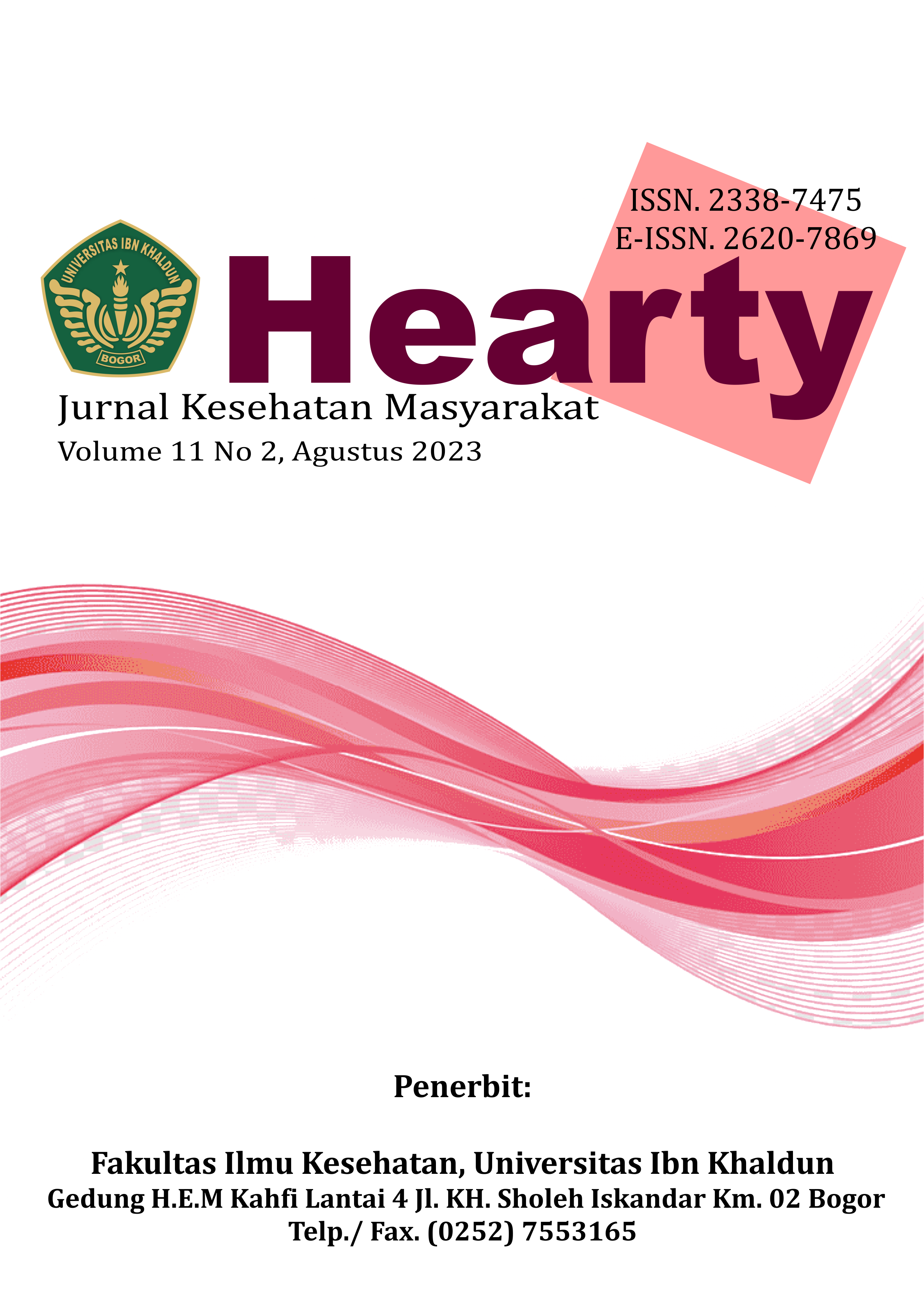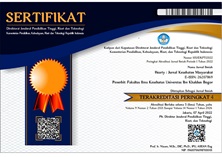EFEKTIVITAS METODE GESTURAL PROMPTS TERHADAP PENGETAHUAN PERSONAL HYGIENE SISWA TUNARUNGU DI SEKOLAH LUAR BIASA NEGERI PEMBINA MEDAN TAHUN 2020
DOI:
https://doi.org/10.32832/hearty.v11i2.6762Abstrak
Gesture prompts are physical movements of another person that are expected to produce the correct response to the subject. A deaf child takes longer to understand the lesson because he has physical and cognitive limitations. Based on the observations of researchers, there are still many deaf students at the Junior High School level who have not maintained personal hygiene as seen from long and black nails and do not wash their hands before eating. The aim of the research: to determine the effectiveness of the Gesture Prompts method on personal hygiene knowledge in deaf students at SLB Pembina Medan in 2020. This study used a quasi-experimental design. This study used the Gesture Prompts technique to increase students' personal hygiene knowledge. The population of this study were all students with hearing impairment as many as 33 students and all of them were used as samples. Based on the results of the T-Test, it is known that in the pre-test, the mean value = 9.52, while in the post-test, the mean = 15.34 with Z = -4.493 and p = 0.001. The Gesture Prompts method is effective in increasing knowledge of personal hygiene in deaf students. It is hoped that the teaching staff will improve health education about personal hygiene with the Prompting Gesture method as a learning method for deaf children.
Keywords: gesture prompts; personal hygiene; deaf
























